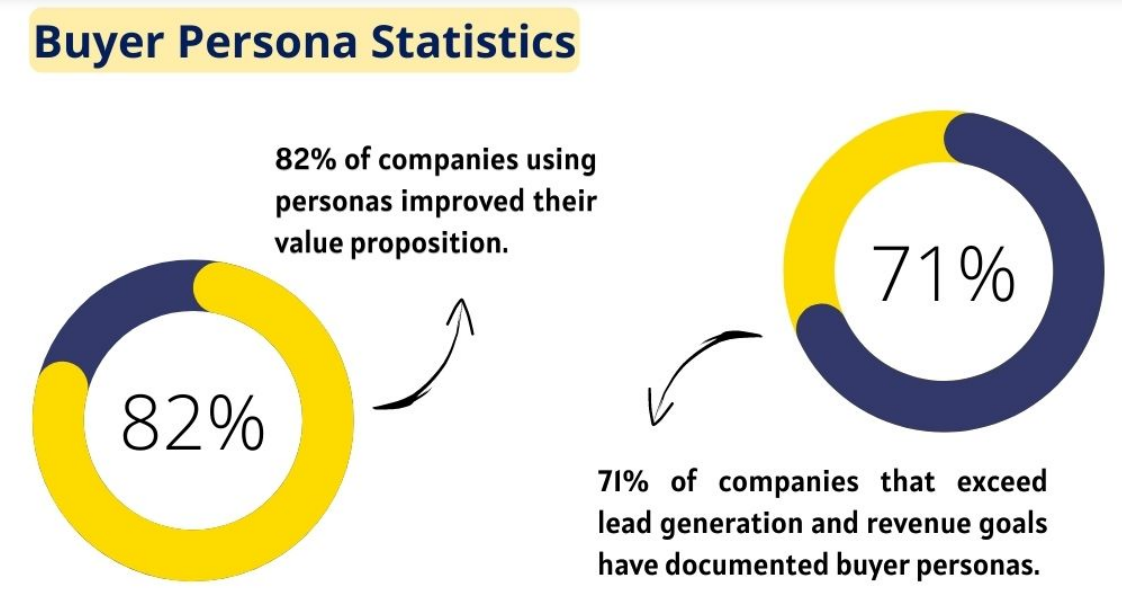- Home
- Fundamentals of Email Marketing
- What Is a Buyer Persona? A Gui ...

For most companies, the ideal buyer persona is very easy to describe: a multi-millionaire with nearly unlimited purchasing power and a very high interest in the product or service the company offers. Unfortunately, this is not necessarily the most realistic description, unless the company you are working for is called Ferrari or Bentley. Realistically, we always need to identify the person who actually wants to buy our product. Characteristics are diverse and can vary from age and gender to political beliefs.
Finding out how to identify these traits is not always easy—but it is rewarding. Knowing your buyer persona will guide most decisions in your marketing journey. And that is exactly what we will talk about in this article: the factors that help build a comprehensive buyer persona, tips for gathering the right data, and insights on how to actually use it to shape stronger, more human-centered marketing. Whether you’re just starting out or refining what you already have, this guide will walk you through the essentials of creating buyer personas that reflect your audience—and help you connect with them in a working way.
What Is a Buyer Persona?
A buyer persona is much more than a basic customer profile. It’s a representation of your ideal customer, built from real data, behavior patterns, motivations, and goals. It shows who your customers are, why they buy, and, just as importantly, why they don’t.
While demographic details like age, job title, or company size help paint a partial picture, they don’t tell you what truly drives a decision. A strong buyer persona reveals deeper patterns. It reveals how potential customers think, what concerns they have, and what information they search for. These thinking patterns provide marketers with important insights around which they can build their messages.
Why businesses create buyer personas
The reason behind creating buyer personas is simple: relevance. When you truly understand your buyers’ motivations and hesitations, you can shape your strategy around them.
Businesses use buyer personas to bring clarity to streamline targeting and personalize content. If you know what questions your ideal customer is asking in the research phase, you can address those concerns in advance.

Key Elements of a Buyer Persona
🟣 Demographics
Demographics, like age, gender, education, income level, company size, and geographic location, are the foundation of a buyer persona. They help you understand who your audience is and how to segment them. For example, a 28-year-old startup founder in Berlin will need different messaging than a 52-year-old executive in Chicago. While these details alone won’t shape your full buyer persona, they build the core understanding of your audience and create initial segments you can build on.
🟣 Psychographics
If demographics tell you who your buyer is, psychographics tell you why they care. This includes personality traits, values, opinions, interests, and lifestyle choices. Are they risk-takers or more risk-averse? Do they value innovation, or is reliability more important? Are they driven by efficiency or by prestige? When creating buyer personas, psychographics allow you to develop campaigns that feel personalized.
🟣 Goals and motivations
What is your buyer hoping to achieve? This could be professional, like increasing revenue, or personal, such as getting recognition or simplifying their workload. These motivators fuel buying behavior, and knowing your persona’s goals allows you to craft value propositions that go along with their vision of success.
🟣 Challenges and pain points
Identifying the specific obstacles your persona is facing allows you to position your product as the solution. Lack of time, budget constraints, and inefficient workflows are just some of the challenges your buyers face. Understanding this helps shape your product messaging, but it also creates empathy by showing buyers you get them. For anyone learning how to build buyer personas, this section is where trust and relevance begin.
🟣 Buying behavior
Understanding your persona’s buying behavior means knowing how they research solutions, who influences their decision, what questions they ask, and how long their process typically takes. Mapping this behavior gives your sales and marketing teams a certain engagement map that directly informs content formats, timing, and CTAs.
🟣 Preferred content channels
Content channels are just as important as content itself because even the right message delivered in the wrong place does not make much sense. Are they scrolling LinkedIn, reading blog posts, or watching YouTube tutorials? Knowing this helps you for optimal resource allocation and helps your content to be seen.
The buyer persona

Buyer Persona Examples
| Buyer persona | Fashion Frida | Email Marketer Eli |
| Name | Frida Novak | Eli Chen |
| Age | 31 | 38 |
| Role | Creative director at a sustainable fashion brand. | Senior email marketing manager at a B2B SaaS company. |
| Location | Berlin, Germany. | Chicago, Illinois. |
| Goals | Grow brand visibility and connect with ethically minded customers through strong visual storytelling. | Improve engagement, streamline workflows, and drive conversions with better segmentation and automation. |
| Challenges | Juggling design, production, and rushed marketing efforts. Needs support with content consistency. | Limited time, multiple tools, and pressure to boost performance fast. |
| Buying behavior | Follows creative blogs, peers, and Pinterest. Chooses tools that are intuitive and visually appealing. | Research-heavy; trusts webinars, MarTech blogs, and peer reviews. |
| Preferred channels | Instagram, Pinterest, and curated fashion newsletters. | LinkedIn, email podcasts, and marketing newsletters. |
| What works | Values-driven messaging, aesthetic content, and peer-backed tools. | Clear results, smart automation features, and tools that save time. |
How to Use Buyer Personas in Email Marketing
The great thing about creating buyer personas is that they make your email marketing sharper and help your message hit the goal better. It allows you to segment your list and talk about your product in a way that fits a particular group. For example, a startup founder and a mid-level manager might both need your product—but for very different reasons. That means your emails should reflect that.
Buyer personas help you understand what your audience values. Like this, you don’t just talk about your product features but frame them as solutions to real problems your users face. That creates an important shift in your narrative from what it does to what it does for them.
Things like psychographics are also important for guiding the tone of your email. Some people prefer short, practical advice, while others like thoughtful case studies or a more narrative tone. When you understand what kind of tone speaks to each persona, you get another chance to impress them.

Tips for Creating Buyer Personas
Tip #1: Use real data, not assumptions
If you want your buyer personas to reflect your actual buyers, you have to start building them based on real facts. You can begin by pulling insights from your CRM, website analytics, and email engagement data. By analyzing what pages people spend time on or which campaigns they respond to, you can already understand a lot.
Other valuable insights come from surveys and customer interviews. This is where you get to understand why people click what they click, what motivates them, what pushes them away, and what kind of language they respond to.
Tip #2: Tap into the right tools
In today’s digital world, almost no one builds buyer personas in a spreadsheet anymore. Tools like HubSpot’s Make My Persona generator, Xtensio, or even Miro can help you organize your persona’s data in a visually clear and logical way. These platforms often come with pre-built fields like demographics, goals, challenges, and buying behavior—so you don’t have to guess what to include.
Besides, they make it easy to share your buyer personas with teammates, so everyone in your team can be on the same page regarding your customer vision.
Tip #3: Update your personas regularly
Creating buyer personas isn’t a one-and-done task. It’s a dynamic process. Someone who cared about speed and convenience last year might care more about price today. And if your company is launching something new, entering a new market, or seeing changes in engagement or conversion—it’s time to reevaluate your personas. Try to review and update your buyer personas at least once or twice a year so they stay accurate, relevant, and helpful for your team.
To Sum Up
The more you know about your buyer persona—what they want, what they fear, how they think—the easier it is to create emails that feel personal and relevant. And the more personal your message feels, the more likely it is to be opened, read, and acted on.
If you’re still wondering how to create a buyer persona, remember it starts with listening. Use data, interviews, and real feedback to build a clear picture of who your customer really is—beyond just job titles and demographics. Because at its core, the buyer persona meaning is simple: it’s your best effort to understand the human behind the click.



